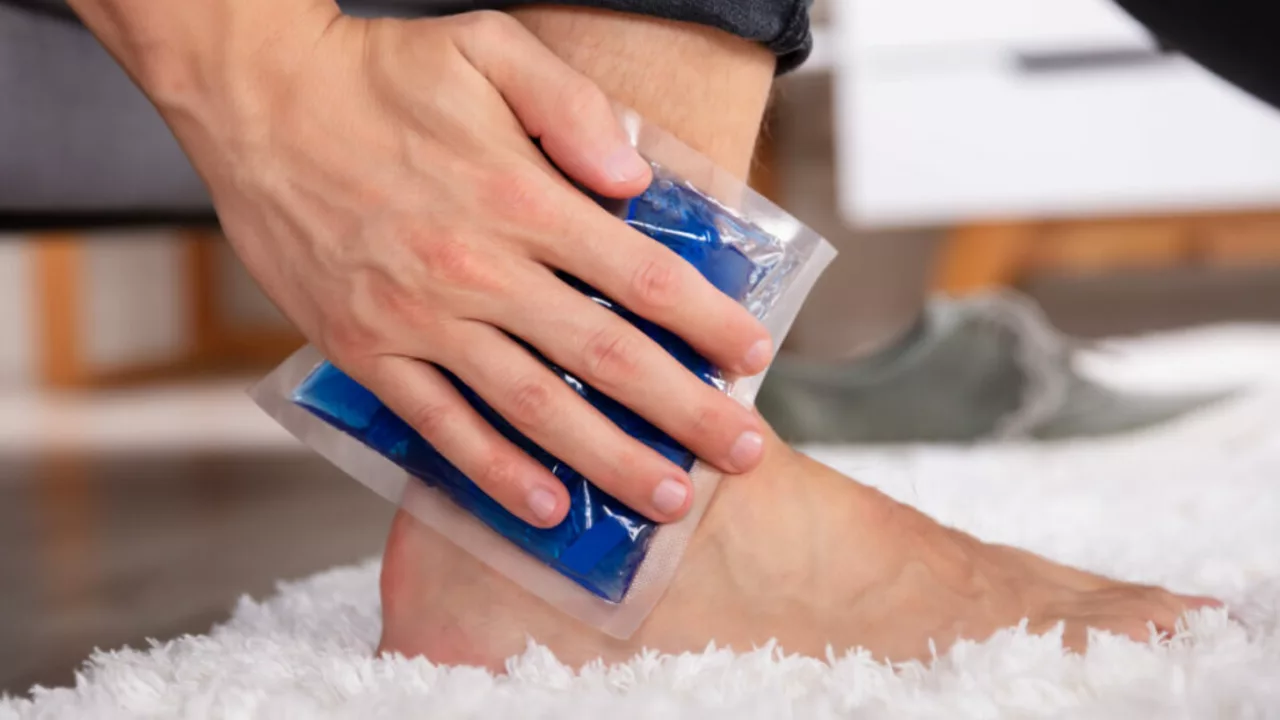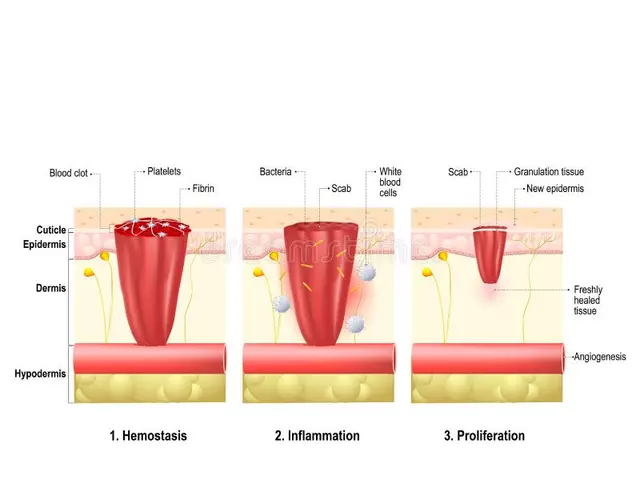Understanding Cold Therapy
Before we delve deeper into the benefits of cold therapy for itching relief, it's essential to understand what it is. Cold therapy, also known as cryotherapy, is a technique where the body is exposed to extremely cold temperatures for several minutes. It can be done in a number of ways, including ice packs, coolant sprays, ice massage, and whirlpools, or ice baths. This therapy might sound scary, but it is a popular treatment due to its numerous health benefits, including its effectiveness in relieving itching.
The Science Behind Cold Therapy and Itching Relief
Itching is an irritating sensation that makes you want to scratch your skin. It is caused by various factors such as allergies, skin conditions like eczema, insect bites, or even certain medications. When we scratch, we create a temporary distraction, which can offer short-term relief. However, scratching usually worsens the itch and can lead to skin damage. This is where cold therapy comes in. The cold helps numb the skin, reducing the itching sensation. It also helps constrict blood vessels, limiting inflammation and swelling that can further irritate the skin.
Cold Therapy for Chronic Itching Conditions
Chronic skin conditions such as eczema and psoriasis are often associated with intense and persistent itching. These conditions can significantly impact a person's quality of life, leading to sleep disturbances and psychological distress. Cold therapy can offer some relief. By reducing inflammation and numbing the skin, cold therapy can help break the itch-scratch cycle often seen in these chronic conditions. It is not a cure, but it can help manage the symptoms and improve the quality of life for those suffering from these conditions.
Benefits of Cold Therapy for Allergic Reactions
Allergic reactions can also cause severe itching. Whether it's from a bug bite, certain foods, or exposure to specific substances, the resulting itch can be extremely uncomfortable. Cold therapy can be a quick and effective solution. The cold can help reduce the body's allergic response, minimizing inflammation, and the itch that comes with it. Furthermore, it's a natural remedy, which means you don't have to worry about side effects that may come with medication.
Using Cold Therapy for Itching Relief After Surgery
Itching is a common side effect after surgery. It can be a result of the healing process or a reaction to certain pain medications. Regardless of the cause, it can be bothersome for many patients. The good news is that cold therapy can help. By reducing inflammation and numbing the area, cold therapy can help alleviate the itch, making the recovery process more comfortable.
Practical Ways to Apply Cold Therapy for Itching Relief
Now that we've covered the benefits of cold therapy for itching relief let's look at how you can apply this at home. One of the easiest ways is to use a cold pack. Make sure to wrap it in a cloth before applying it to your skin to prevent frostbite. Another option is to take a cool bath or shower. Just remember that the water should not be too cold, as it can dry out your skin and potentially make the itching worse. If the itching is widespread, a cold bath might be the best option.
Precautions When Using Cold Therapy
While cold therapy can be beneficial for itching relief, it's essential to use it correctly to prevent any harm. As mentioned earlier, always wrap ice or cold packs in a cloth before applying them to the skin. Never apply them directly as this can lead to frostbite. Also, limit the application to 15-20 minutes at a time. If you have a circulatory condition, consult your doctor before starting cold therapy. Lastly, remember that cold therapy is a temporary solution. If the itch persists, seek medical advice.
Conclusion
In conclusion, cold therapy can be an effective, natural method for relieving itchiness. Whether it's due to a chronic skin condition, an allergic reaction, or post-surgery healing, cold therapy can provide a quick and convenient solution. However, it's essential to use it correctly and seek medical advice if the itch persists. With the right approach, cold therapy can be a valuable tool in your itch-relief arsenal.





16 Comments
Dan Dawson
Cold packs work, try them.
Lawrence Jones II
From a neurophysiological perspective, cryotherapy transiently reduces C‑fiber excitability, thereby attenuating pruritic signaling 🧊😊.
Robert Frith
Yo this is the best thing since tea, trust the British way of staying chill mate, it realy works even when ur skin is actin up!
Albert Gesierich
While a brief statement may capture the essence, it is important to note that the efficacy of cold packs hinges upon proper application duration and barrier protection to prevent frostbite; neglecting these parameters can exacerbate tissue damage.
Brad Tollefson
Applying a cold pack for ten minutes is generally safe, but ensure you wrap it in a thin towel to avoid direct skin contact; otherwise you might get a frostbite. It is definatly effective when used correctly.
Paul van de Runstraat
Sure, just slap an ice cube on that itch and watch the magic happen-because nothing says 'professional care' like a freezer inventory, right?
Suraj Midya
Cold therapy is a simple trick that works everywhere, even in our own country, and it keeps the skin calm without any fancy chemicals.
ashish ghone
When you first encounter an insistent itch, the immediate impulse is to scratch, but this reflex often worsens the underlying inflammation, creating a vicious cycle that can be both physically uncomfortable and mentally draining. Cold therapy offers a physiological counterpoint by inducing vasoconstriction, which reduces blood flow to the affected area and consequently diminishes the release of histamine and other pruritic mediators. Moreover, the chilling effect temporarily numbs cutaneous nerve endings, providing a sensory distraction that can last several minutes after the ice is removed. For individuals suffering from chronic conditions such as eczema or psoriasis, incorporating a brief cold compress into the daily routine can serve as an adjunct to topical treatments, potentially lowering flare‑up frequency. It is essential, however, to follow safety guidelines: never apply ice directly to the skin, always use a breathable barrier, and limit each session to fifteen to twenty minutes to avoid frostbite. Studies have shown that regular, moderated cold exposure may also improve skin barrier function over time, though more research is needed to confirm long‑term benefits. In practical terms, a simple household freezer will provide sufficient ice cubes, but commercial gel packs can conform more comfortably to irregular body contours. If you choose a cool shower instead, set the water temperature just cold enough to feel refreshing without causing a shiver, as overly cold water can strip natural oils and exacerbate dryness. For post‑surgical patients, the reduction of swelling afforded by cold therapy can also alleviate the associated itching that often arises from scar tissue formation. While the technique is generally safe, individuals with circulatory disorders such as Raynaud’s phenomenon should consult a physician before starting any cryotherapy regimen. In my experience, pairing cold therapy with moisturizers applied immediately after the session helps lock in hydration, creating a more comfortable skin surface. Remember that cold therapy is a symptomatic relief, not a cure, and should be integrated with comprehensive dermatological care. Finally, listening to your body’s signals-stopping the treatment at the first sign of numbness beyond comfort-ensures that you reap the benefits without unintended harm. 😊❄️
steph carr
Great overview! If you’re hesitant, start with a short, wrapped ice pack and see how your skin reacts before extending the time.
Vera Barnwell
Everyone talks about cryotherapy like it’s a miracle, but the real story is that big pharma has been suppressing cheap, natural itch‑relief methods for decades to keep their antihistamine sales high-stay vigilant!
David Ross
Wow!!!, this article really covers everything-, from the science behind nerve conduction, to practical tips, to safety precautions, and even the psychological benefits, all in one place!!!
Henry Seaton
Cold helps, but dont overdo it. Use short sessions.
Baby Thingie
It is advisable to wrap ice in a cloth and limit application to 15 minutes. :)
frank hofman
Idk why everyone hyped cold therapy, just use lotion lol 😂.
Dannii Willis
I appreciate the thoroughness; the balance between benefits and cautions is nicely presented.
Ann Campanella
Honestly, this is just basic advice anyone can google.